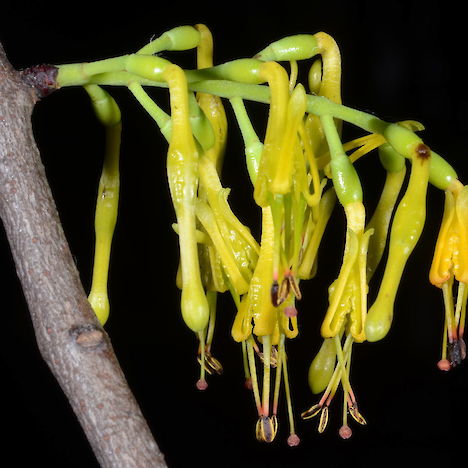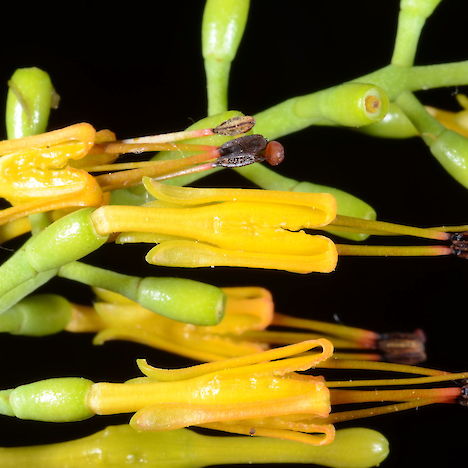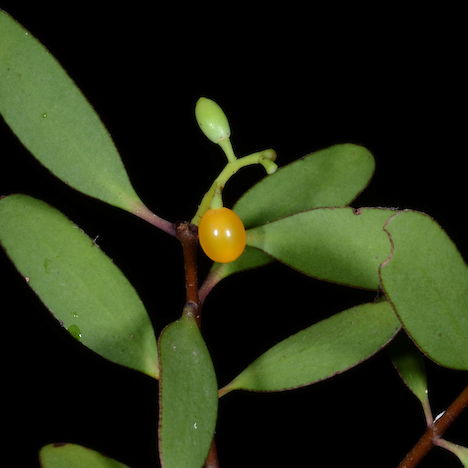Other names:
pirita, pirirakiThreat category:
At Risk: Declining?Regions:
Northland, Auckland, Waikato, Bay of Plenty, Gisborne, Hawkes Bay, Manawatu-Wanganui, Taranaki, Wellington, Nelson-Tasman, Marlborough, Westcoast, Canterbury, Otago, SouthlandDistribution:
North Island (uncommon) and South Island
Key Features
- Yellow mistletoe is a semi-parasitic shrub, which is mainly found on the outer branches of beech trees.
- The leaves are oval, dull green and with a reddish margin.
- The flowers are tubular, orange-yellow, and present in small clusters.
Distribution and Habitat
- North Island (uncommon) and South Island.
- Yellow mistletoe is most commonly found on mountain beech (Fuscospora cliffortioides) or black beech (Fuscospora solandri), but it has been recorded on 11 other indigenous species.
Threats
- Pest animals (including possums).
- Fire.
- Collectors.
- Destruction of habitat and hosts.
- Vegetation succession.
- Fungal diseases.
Management Opportunities
- Survey for new locations.
- Mark known sites.
- Protect habitat.
- Possum control by poisoning or trapping.
- Ensure that forest owners are aware of potential habitats and can recognise the species.
Monitoring Options
- Check existing populations annually.
- Report new locations to DOC.
Further Information and Support
- Pest animal control - Department of Conservation, Regional Councils.
References
- New Zealand Plant Conservation Network (NZPCN). http://www.nzpcn.org.nz
- Dopson et al. (1999). The conservation requirements of New Zealand’s nationally threatened vascular plants. Threatened Species Occasional Publication 13. Department of Conservation, Wellington.
- Poole & Adams (1994). Trees and shrubs of New Zealand. Maanaki Whenua Press, Lincoln.





